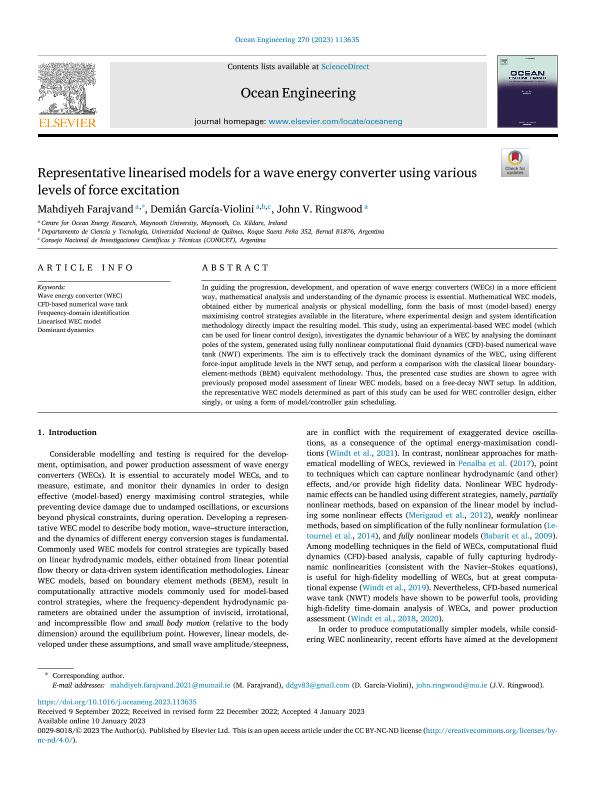Artículo
Representative linearised models for a wave energy converter using various levels of force excitation
Fecha de publicación:
02/2023
Editorial:
Pergamon-Elsevier Science Ltd
Revista:
Ocean Engineering
ISSN:
0029-8018
Idioma:
Inglés
Tipo de recurso:
Artículo publicado
Clasificación temática:
Resumen
In guiding the progression, development, and operation of wave energy converters (WECs) in a more efficient way, mathematical analysis and understanding of the dynamic process is essential. Mathematical WEC models, obtained either by numerical analysis or physical modelling, form the basis of most (model-based) energy maximising control strategies available in the literature, where experimental design and system identification methodology directly impact the resulting model. This study, using an experimental-based WEC model (which can be used for linear control design), investigates the dynamic behaviour of a WEC by analysing the dominant poles of the system, generated using fully nonlinear computational fluid dynamics (CFD)-based numerical wave tank (NWT) experiments. The aim is to effectively track the dominant dynamics of the WEC, using different force-input amplitude levels in the NWT setup, and perform a comparison with the classical linear boundary-element-methods (BEM) equivalent methodology. Thus, the presented case studies are shown to agree with previously proposed model assessment of linear WEC models, based on a free-decay NWT setup. In addition, the representative WEC models determined as part of this study can be used for WEC controller design, either singly, or using a form of model/controller gain scheduling.
Archivos asociados
Licencia
Identificadores
Colecciones
Articulos(SEDE CENTRAL)
Articulos de SEDE CENTRAL
Articulos de SEDE CENTRAL
Citación
Farajvand, Mahdiyeh; García Violini, Diego Demián; Ringwood, John V.; Representative linearised models for a wave energy converter using various levels of force excitation; Pergamon-Elsevier Science Ltd; Ocean Engineering; 270; 2-2023; 1-9
Compartir
Altmétricas




